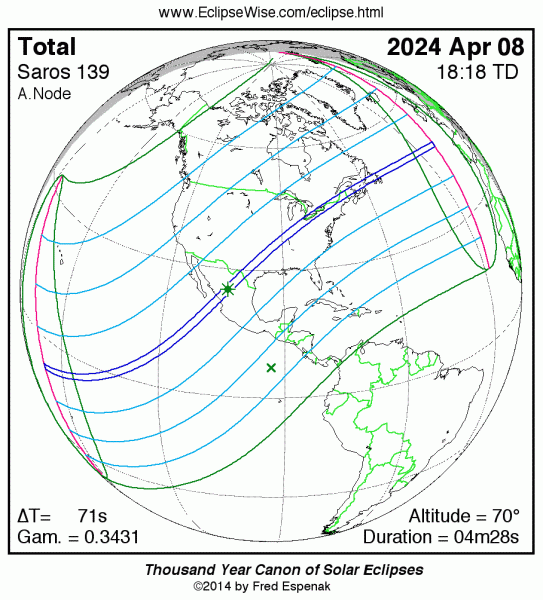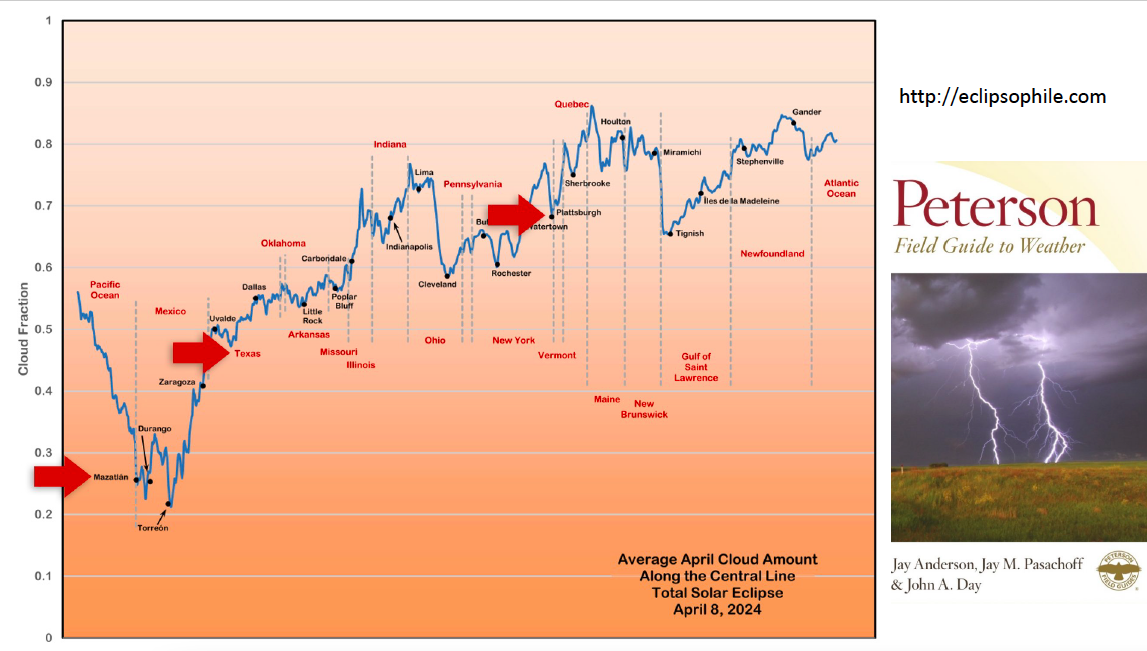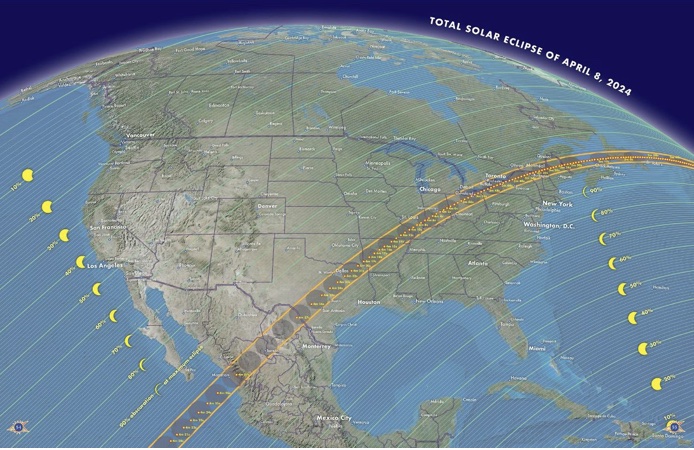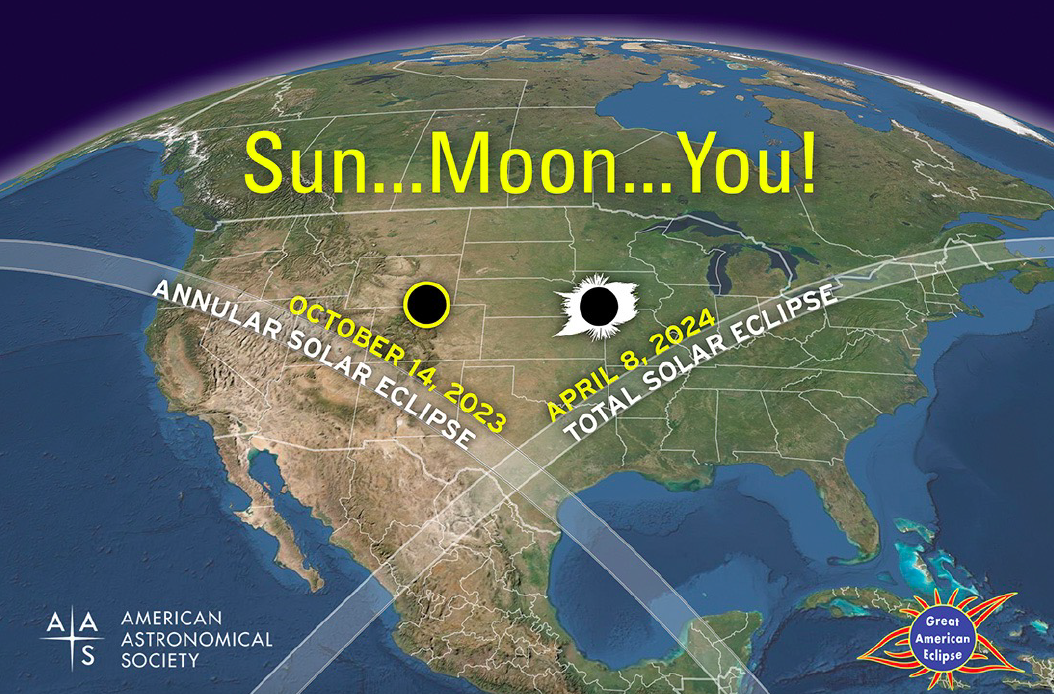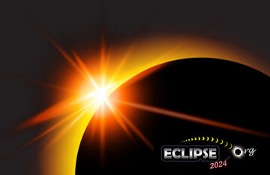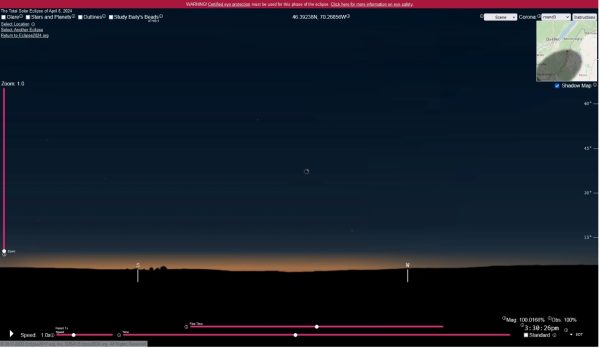Total Solar Eclipse on April 8, 2024
Fred Espenak’s old site for 5 Millennia of eclipses at NASA https://eclipse.gsfc.nasa.gov/SEcat5/SEcatalog.html
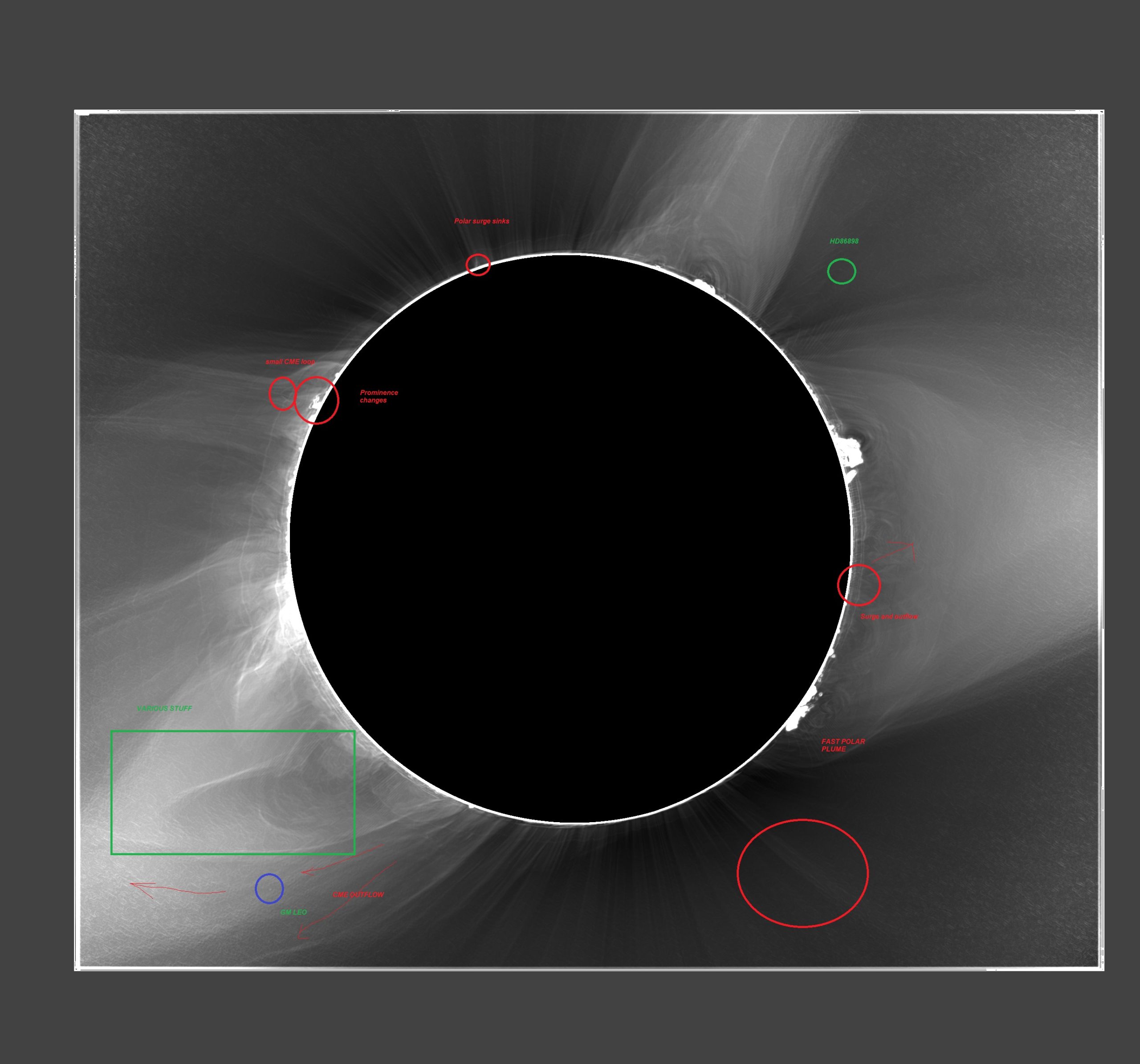
The Citizen Continental-America Telescopic Eclipse (CATE) Experiment
Eclipse Simulation Videos
Here is a series of eclipse simulation videos for the 2023 and 2024 solar eclipses as seen from over 2300 locations in North America, produced by Eclipse2024.org using its eclipse simulator.
Full videos are available on YouTube, and eclipse sequence videos are available via the eclipse2024.org Eclipse Videos page for educators, tourism/outreach, and media. All videos are free of charge to use, and are available in English, French, and/or Spanish depending on the location.
Click below for images of the simulator and eclipse videos (courtesy of Dan McGlaun):
Eclipse Animations by Fred Espenak and Michael Zeiler
Check out: https://geoxc-apps2.bd.esri.com/Visualization/solar3d/index.html
Also, Michael Zeiler (GreatAmericanEclipse.com) and Fred Espenak have created a series of eclipse animations – one for every solar eclipse during the 21st Century (that’s 224 eclipses).
The animations show the path of the Moon’s shadows as they sweep across a global map of Earth (an orthographic projection). The vantage point of the animations is as seen from the Moon. The daylight hemisphere of Earth then faces the Moon and the lunar shadows appear perfectly circular with no distorted projection effects as they race across Earth. Another consequence of this viewing geometry is that the Moon’s shadows move across Earth’s disk in a straight line.
For all eclipses, the Moon’s large, pale penumbral shadow appears as a lightly shaded circle and is outlined with a solid black edge. For Total, Annular, and Hybrid eclipses, the Moon’s much smaller inner shadow (either umbra or antumbral) appears as a tiny black disk and tracks along the path of totality or annularity (yellow strip). A partial eclipse is visible from within the penumbra, while a total or annular eclipse is visible inside the umbra or antumbra.
Each animation includes important information in the four corners. In the upper left corner is the type of eclipse and the eclipse date. To the upper right is the Universal Time. The lower left corner displays the instantaneous duration of totality or annularity (not used for partial eclipses). To the lower right is the credit for the animation.
Inspired by A. T. Sinclair’s original animations from two decades ago, the new animations are available in three sizes/resolutions: small (300 x 300 pixels), medium (400 x 400 pixels), and large (800 x 800 pixels).
Michael Zeiler and Fred Espenak created these animations to freely use and share with the eclipse community and the media.
They may be used and distributed through Creative Commons (use without modifications and including an attribution: “Global Eclipse Animation courtesy of Michael Zeiler (GreatAmericanEclipse.com) and Fred Espenak (EclipseWise.com)”).
The following EclipseWise web page is an index with links to all 224 eclipse animations in each of three sizes/resolutions. They can be downloaded here and saved:
http://eclipsewise.com/solar/SEdecade/SEanimate2001.html
At GreatAmericanEclipse.com you can find the animations here:
https://www.greatamericaneclipse.com/solar-eclipses-of-the-21st-century
Other Related Work
-
-
- Zoomable, clickable map by Xavier Jubier
- Fred Espenak Total Eclipse 2024 page
- Fred Espenak 2024 Eclipse-Map page
- Fred Espenak Thumbnails of Eclipses 2018-2030
-
-
-
including eclipse times for every with in North America and simulations
-
-
-

